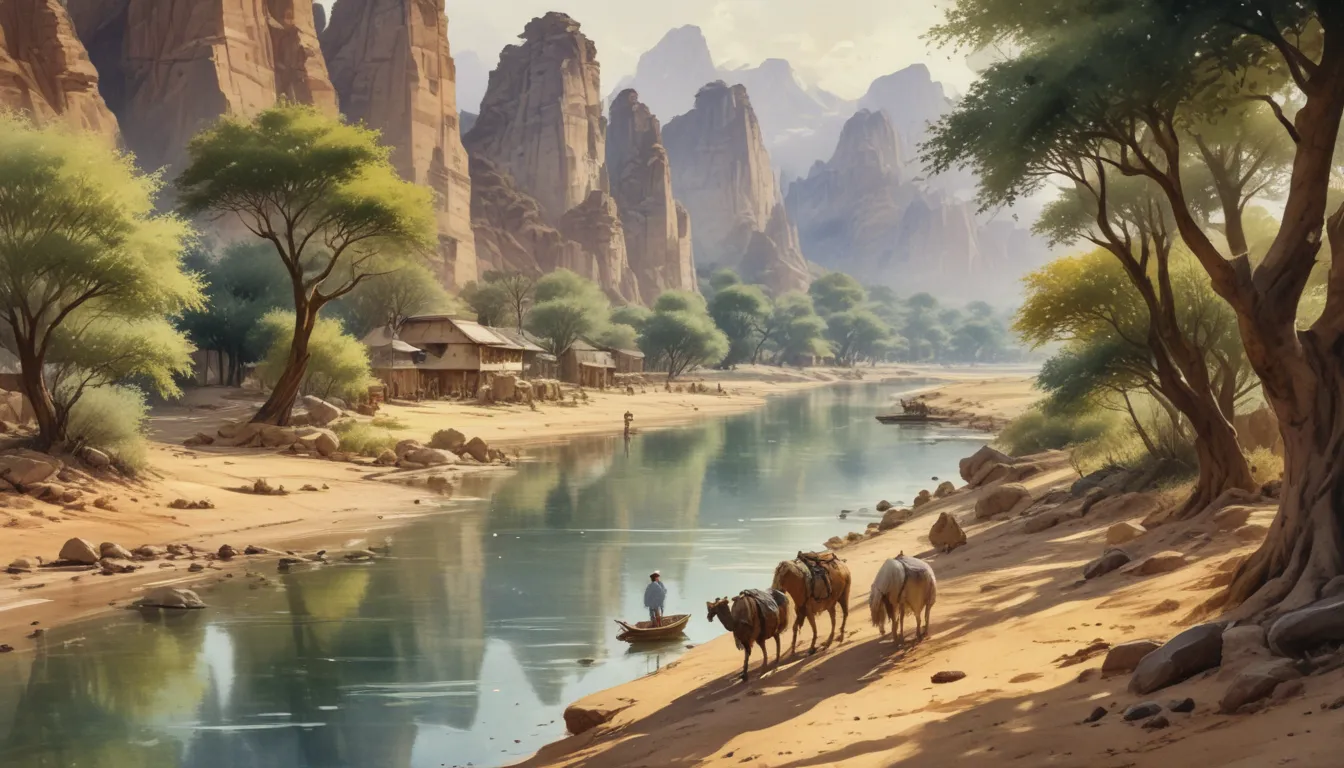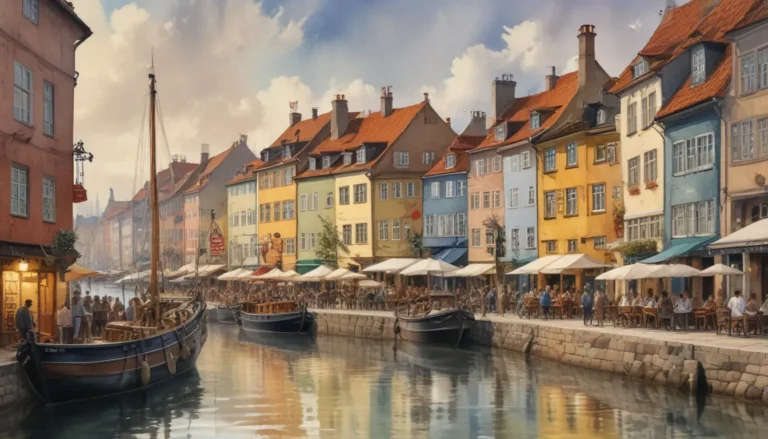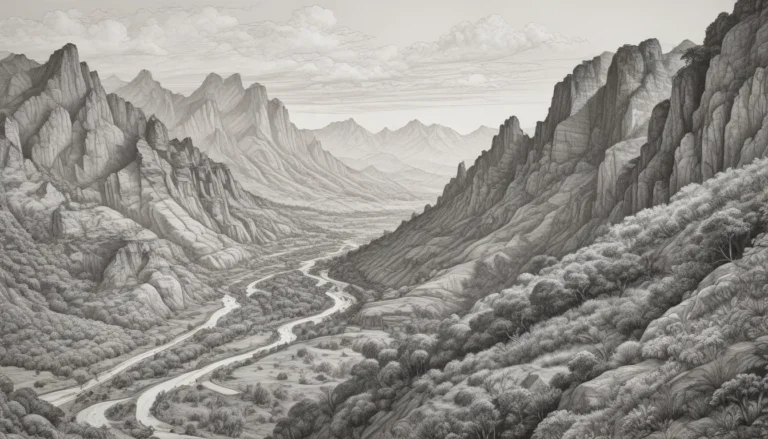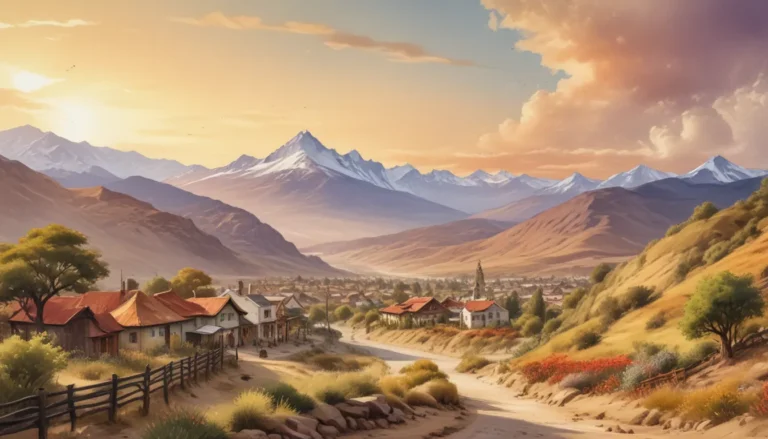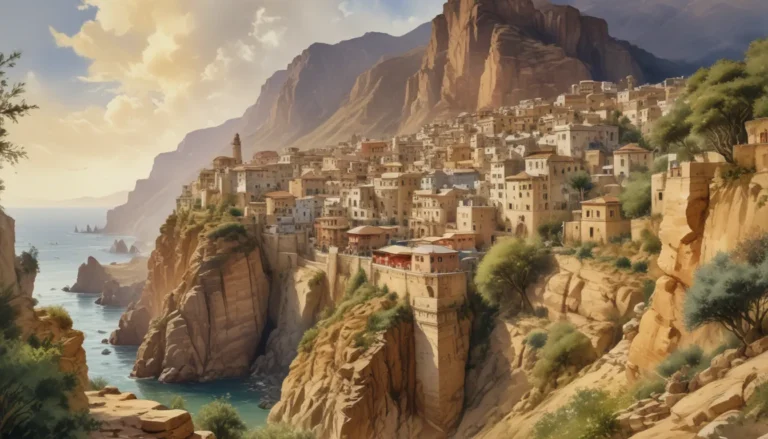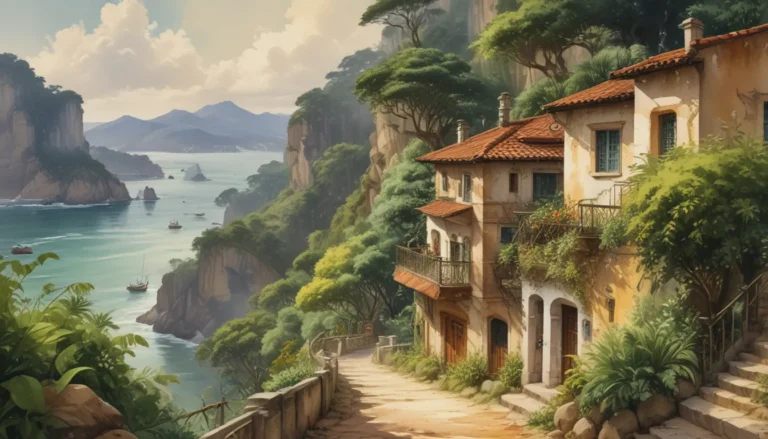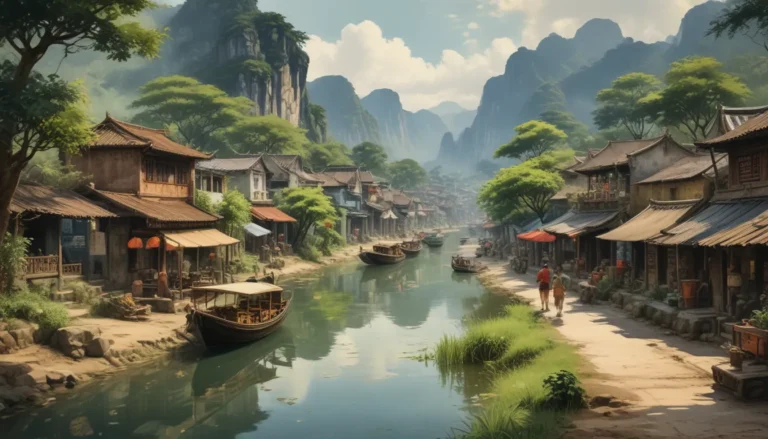The images in our articles are for illustrative purposes only and may not exactly match the content. They are intended to capture your interest and complement the text, not to replace it.
Chad, a captivating African nation nestled in the heart of Central Africa, beckons with its rich history, diverse culture, and stunning landscapes. From the Sahara Desert to the lush plains, Chad is a country of contrasts that offers a treasure trove of experiences for the adventurous traveler. Let’s delve into 31 fascinating facts about Chad, shedding light on its history, geography, culture, wildlife, and more, as we embark on a virtual journey to uncover the wonders of this enchanting nation.
Unveiling the Charm of Chad
Chad, with its central location in Africa, boasts a diverse tapestry of ethnic groups, vibrant traditional clothing, and a culinary heritage that makes it a captivating destination for cultural exploration. The challenging climate and unique wildlife of Chad offer a harmonious blend of ancient civilizations, traditional arts, and conservation milestones, making it a must-visit for nature enthusiasts and adventurous travelers.
Discovering the Heart of Africa
Chad’s Central Location in Africa
With its geographical coordinates falling between 7° and 24° north latitude, and 13° and 24° east longitude, Chad boasts a central position on the African continent.
The Fifth-Largest Country in Africa
Covering an expansive land area of approximately 1,284,000 square kilometers, Chad is larger than Spain, France, and Germany combined.
Lake Chad: A Vital Water Source
Located in the southwestern part of Chad, Lake Chad is the largest wetland in the Sahelian region and serves as a vital water source for surrounding communities.
N’Djamena: The Vibrant Capital City
Situated on the banks of the Chari River, N’Djamena is not only the political center of Chad but also a hub for economic and cultural activities.
Immersing in Chad’s Cultural Mosaic
Diverse Ethnic Groups of Chad
More than 200 ethnic groups call Chad home, including Sara, Kanembu, Hadjeray, and Arab ethnicities, each contributing to the rich cultural tapestry of the nation.
Official Languages: French and Arabic
Reflecting Chad’s historical ties with French colonization and its proximity to Arab-speaking nations, French and Arabic are recognized as official languages.
Ancient Civilizations of Chad
The region’s history dates back to prehistoric times, with evidence of ancient civilizations such as the Sao, Kanem-Bornu, and Ouaddai kingdoms still present in archaeological sites.
Exploring Chad’s Natural Beauty
Dominance of the Sahara Desert
Approximately 80% of Chad’s territory is part of the Sahara Desert, making it one of the largest desert nations in the world.
A Landlocked Country with Unique Challenges
Despite its central location, Chad does not have direct access to major bodies of water, presenting unique challenges for trade and transportation.
Vibrant Traditional Music
Chadian music blends traditional rhythms, Islamic influences, and modern styles, creating a unique sound that reflects the country’s cultural identity.
Wildlife and Biodiversity in Chad
National Parks and Protected Areas
From Zakouma National Park to the Ennedi Massif, Chad showcases remarkable biodiversity, providing habitats for a wide range of wildlife, including elephants, lions, and zebras.
Agriculture: The Backbone of Chad’s Economy
Cotton, millet, sorghum, and livestock farming play a significant role in Chad’s economy, providing primary sources of income for many Chadians.
Rich Culinary Heritage
Chad’s cuisine combines influences from various ethnic groups, featuring dishes such as boule (millet porridge), dongo dongo (spicy peanut stew), and grilled meat skewers.
Preserving Tradition and Custom in Chad
The Tubu People: Indigenous Nomadic Herders
The Tubu, also known as the Teda, have preserved their unique customs and traditions as nomadic herders in Chad for centuries.
Vibrant Traditional Clothing
Chadian traditional attire is characterized by colorful fabrics, intricate embroidery, and distinct patterns that reflect the country’s cultural diversity.
A Youthful Population
The majority of Chad’s population is under 25, emphasizing the importance of investing in education, healthcare, and employment opportunities for the youth.
Cherishing Natural Resources in Chad
The Importance of the Chari River
Flowing through Chad and neighboring Cameroon, the Chari River supports irrigation, fishing, and transportation, serving as a lifeline for many communities.
Unique Architectural Style
Mud-brick buildings with distinct designs can be seen across Chad, showcasing local construction techniques adapted to the climate and environment.
Conservation Milestone: Zakouma Elephant Population
In 2019, Chad’s aerial survey revealed a significant increase in elephant numbers in Zakouma National Park, highlighting successful conservation efforts.
Embracing Community and Hospitality in Chad
Strong Sense of Community
Hospitality is deeply ingrained in Chadian culture, with communities coming together to celebrate, share meals, and support one another.
Traditional Arts and Crafts
From pottery to basket weaving, woodcarving, and leatherwork, Chadian artisans create beautiful crafts that reflect their cultural heritage.
The Tibesti Mountains: A Natural Wonder
The Tibesti Mountains in northern Chad offer stunning landscapes, volcanic formations, and ancient rock art that attract adventurous travelers.
Celebrating History and Heritage of Chad
Kanem Empire: A Center of Trade and Power
From the 8th to the 14th century, the Kanem Empire thrived in present-day Chad, playing a pivotal role in trade, Islamic scholarship, and politics.
Diverse Climate Challenges
Chad experiences a wide range of climatic conditions, from desert heat to more moderate temperatures in the south, presenting diverse challenges for its inhabitants.
Unique Wildlife Species
Chad’s national parks provide sanctuary for endangered species such as the African manatee, African wild dog, and Kordofan giraffe.
Cultural Traditions and Sports in Chad
Popular Traditional Wrestling
Wrestling competitions, or “Lutte Traditionnelle,” attract enthusiastic crowds, showcasing the strength, skill, and cultural pride of Chadian athletes.
Karalayé Festival: Showcasing Chadian Culture
The annual festival in N’Djamena celebrates various aspects of Chadian culture, including music, dance, crafts, and fashion.
Abundant Mineral Resources
Chad boasts rich mineral reserves, including petroleum, uranium, gold, and limestone, offering economic opportunities for the country.
Planning a Visit to Chad
Mode of Transportation: Camels in the Sahara
In the Sahara region, camels are commonly used for transportation, providing a means to navigate the arid terrain and transport goods.
Progress in Healthcare: Child Mortality Rates
Efforts in healthcare and access to basic amenities have contributed to a decline in child mortality rates in Chad, with ongoing improvements needed.
The Symbolism of the Chadian Flag
The flag’s three vertical stripes represent the sky and hope, the sun and the desert, and progress and the blood of martyrs, symbolizing Chad’s identity.
Embark on an Unforgettable Journey to Chad
Chad, with its rich cultural heritage, diverse landscapes, and welcoming people, offers a unique experience for travelers seeking to explore the heart of Africa. From ancient civilizations to vibrant traditions, Chad continues to captivate and inspire visitors with its beauty and resilience. Don’t miss the opportunity to visit Chad and witness its wonders firsthand.
Frequently Asked Questions
- What is the capital city of Chad?
-
The capital city of Chad is N’Djamena, which is also the largest city in the country.
-
What languages are spoken in Chad?
-
French and Arabic are the official languages of Chad, with over 120 different languages spoken throughout the country.
-
Is Chad a safe country to visit?
-
While Chad faces security challenges, certain regions of the country are considered safe for travel. It is advisable to check travel advisories before planning a trip to Chad.
-
What are some popular tourist attractions in Chad?
-
Popular tourist attractions in Chad include Zakouma National Park, Ennedi Massif, Lake Chad, and the capital city of N’Djamena.
-
What is the climate like in Chad?
-
Chad has a dry climate with hot summers and cooler winters, while the southern regions experience a more tropical climate with higher rainfall levels.
-
What is the currency of Chad?
-
The currency used in Chad is the Central African CFA franc (XAF).
-
What is the main source of income in Chad?
- Chad’s main sources of income include oil production, agriculture, and livestock farming.
Journey into the Heart of Chad
As we conclude our exploration of the fascinating facts about Chad, we invite you to embark on a journey into the heart of this enchanting country. Discover the rich cultural heritage, explore the diverse landscapes, and immerse yourself in the warmth and hospitality of the Chadian people. From its ancient civilizations to its conservation efforts, Chad is a country that continues to inspire and captivate visitors from around the world. Experience the beauty of Chad and create unforgettable memories in this African gem.
Thank You for Exploring Chad with Us
Our commitment to delivering engaging and trustworthy content is at the core of what we do. Each fact shared here is contributed by real users like you, bringing diverse insights and information to light. Our dedicated editors ensure the accuracy and reliability of every submission, ensuring that the facts we provide are not only fascinating but also credible. Trust in our dedication to quality and authenticity as you explore and learn with us.
Was this Page Helpful?
We strive to provide valuable and informative content to enhance your understanding and appreciation of the world around us. Your feedback and engagement are vital in shaping the content we deliver. As we continue to explore the wonders of Chad and other fascinating destinations, we invite you to join us on this journey of discovery and learning. Thank you for exploring Chad with us, and we look forward to sharing more exciting facts and insights with you in the future.
